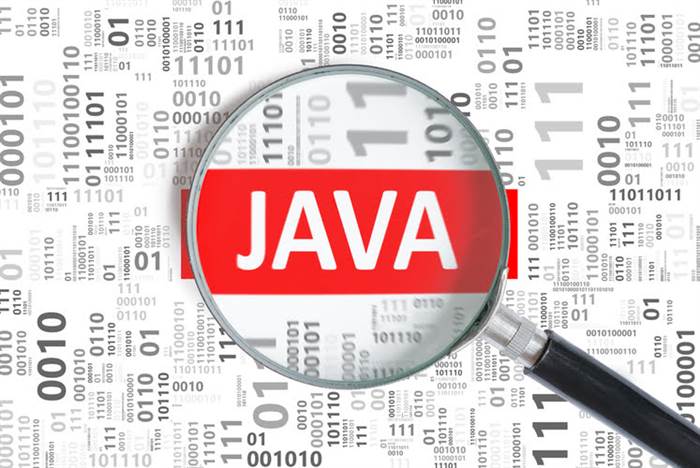Content
Ship your docs with a couple of super simple declarations. Webpack can pick the right code based on the DefinePlugin declaration and this code. You have to use CommonJS module definition style here as ES2015 imports don’t allow dynamic behavior by design. React is perhaps the most known example of an early adopter of the technique. Using DefinePlugin can bring down the size of your React production build somewhat as a result, and you can see a similar effect with other packages as well. Now you can access NODE_ENV variable anywhere in your code. Since my Edit on the above post by thevangelist wasn’t approved, posting additional information.
Environment variables are embedded into the build, meaning anyone can view them by inspecting your app’s files. If you want to pick value from package.json like a defined version number and access it through DefinePlugin inside Javascript. You can directly use the EnvironmentPlugin available in webpack to have access to any environment variable during the transpilation.
Intro to Nodejs.
To access these variables for our local environment, we store them in the .config.js which is simple a JavaScript Object. The only downside to this UI only approach is that you are unable to access those variables in your local development environment. When you are running vue-cli-service build, your NODE_ENV should always be set to “production” to obtain an app ready for deployment, regardless of the environment you’re deploying to. Webpack allows you to set environment variables through DefinePlugin and EnvironmentPlugin. Latter maps the system level environment variables to the source. Setting environment variables is a technique that allows you to control which paths of the source are included in the build.
Does webpack need Babel?
rules : Each file in Node is treated like a module. Webpack itself understands only Javascript and JSON modules. Since we want to transpile ES6, we need babel-loader and webpack needs to know the rules on how to process the Javascript using the given loader.
On a sidenote a slightly cleaner approach would be store these variables in a separate file and export them from that file. Note that only NODE_ENV, BASE_URL, and variables that start with VUE_APP_ will be statically embedded into the client bundle with webpack.DefinePlugin. It is to avoid accidentally exposing a private key on the machine that could have the same name. The very first step is still creating a folder in your project to store a Javascript file for each environment. To ensure the build has good cache invalidation behavior, you’ll learn to include hashes to the generated filenames in the next chapter.
How to use environment variables with Webpack.
Here is a way that has worked for me and has allowed me keep my environment variables DRY by reusing a json file. Now you can use the variables in your code using the process.env syntax anywhere in your code and then webpack will replace them with the corresponding values in the .env file. Storing and accessing those variables from a .env file in the project’s root folder, which is ignored from version control. Setting up your env variable without assignment, –env production sets env.production to true by default. Those files should export the environment variables using the ES6 syntax. Loaded variables will become available to all vue-cli-service commands, plugins and dependencies.

This way the client notices if assets have changed and can fetch the updated versions. In addition to these plugins, you can find other optimization related plugins that allow you to control the build result in many ways. It might be minified, it might even be heavily transpiled, but the hypothetical API key is still a plain text series of unicode characters conveniently delivered to the client in perfectly human-readable form. The ONLY RIGHT WAY is for no secret ever needing to leave the realm of your server / network / virtual private cloud. Your client knows one API and one API only and that is YOUR public network gateway. If your client needs to request a 3rd party service, you provide a shallow service on the edge of your VPC that proxies her request to the 3rd party.
A Map To Modern JavaScript Development (
Since you don’t have to specify the value of the key, you only have to filter for the string you are looking for (e.g. ‘WEBPACK_DEMO_’) and the plugin will do the mapping for you. This post covers the three ways on how you can set environment variables in build time to be used at runtime with webpack. I use examples and gained inspiration to write this post from this GitHub Repo by Ben New . Feel free to have a look at the repo to see these three approaches in action. With some workaround with configuration based on defaults option to achieve that, once the package has .env.defaults file to as initial values for env variables you can use it for development and let .env for your production. Now you can read the value of environment variables you just passed in through your CLI in your webpack config, and load the appropriate .env file using the dotenv-webpack ‘s path property.
- Instead, you end up boosting your secret stuff, unless you add a webpack to gitignore ��♀️ there is a better solution.
- This way of setting environment variables at build time to use at runtime gives you the most control but also requires a larger amount of code.
- This goes through the keys you have in your local ‘process.env’ and filters them to keys that only start with the string ‘WEBPACK_DEMO_’.
- You could have a more complex structure, such as an object there but you get the idea.
- This post covers the three ways on how you can set environment variables in build time to be used at runtime with webpack.
If they don’t contain a NODE_ENV variable, it will be set accordingly. For example, NODE_ENV will be set to “production” in production mode, “test” in test mode, and defaults to “development” otherwise. To summarise it depends on how much control you require over this process and also on if you want to use your actual environment variables (e.g. the variables set in you build pipeline or on your build machine). If you want to use these variables you will have to go with either DefinePlugin or EnvironmentPlugin. DefinePlugin gives you the most control allowing you to set global variables as well as environment variables but does requires the most code.
When using environment variables, you might need to use different values for some keys depending on whether you are in a development or production environment. This plugin is to read the environment variables from the .env file securely by only exposing the variables used in the code. The DefinePlugin allows you to create global constants which can be configured at compile time. This can be very useful for allowing different behaviour between development builds and production builds.

The first two are offered by webpack themselves where as DotenvPlugin is a third-party plugin. With this setup you can securely access multiple environment values for separate values for production and development environments.
Also refer to the Vue 3 Tooling Guide for the latest recommendations. The name of the environment file continues to be variable like in the Gulpfile, you should pass that value to your NPM script using the env flag. Given minifiers eliminate dead code, using the plugins allows you to remove the code from the resulting build. Instead, you end up boosting your secret stuff, unless you add a webpack to gitignore ��♀️ there is a better solution. Since Webpack v4, simply setting mode in your Webpack config will set the NODE_ENV for you . EnvironmentPlugin uses DefinePlugin internally and maps the environment values to code through it.
- Now you can use the variables in your code using the process.env syntax anywhere in your code and then webpack will replace them with the corresponding values in the .env file.
- For new projects, it is now recommended to use create-vue to scaffold Vite-based projects.
- Since you don’t have to specify the value of the key, you only have to filter for the string you are looking for (e.g. ‘WEBPACK_DEMO_’) and the plugin will do the mapping for you.
- To pass the variable to other tools, you’ll have to set it explicitly outside of webpack or within webpack configuration.
- Given minifiers eliminate dead code, using the plugins allows you to remove the code from the resulting build.
- Using this there is no funky env variable or cross-platform problems .
We are now able to test our site locally using different variables based on the environment config files, i.e. development.config.js or production.config.js. Using alias in Webpack configuration to handle environment vars in your application modules.This is a complement to a previous post about bundling environment variables using Gulp. Sometimes a part of your code should execute only during development.











